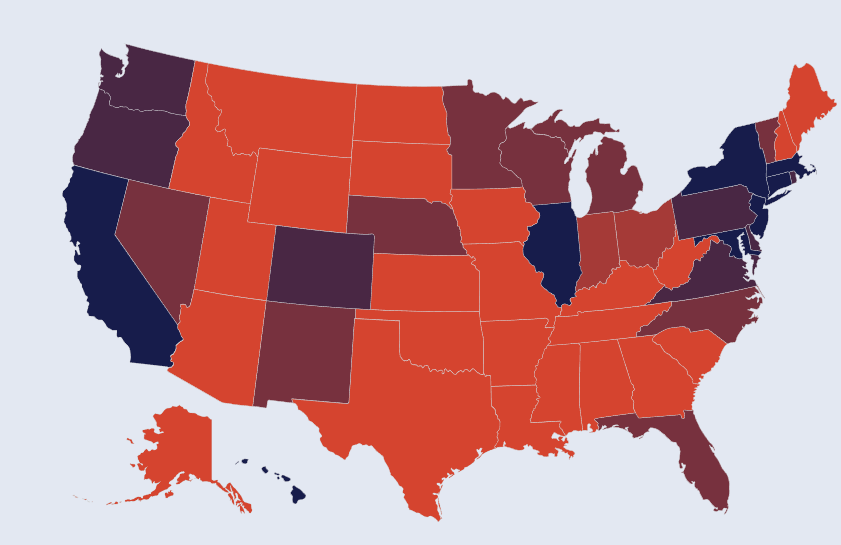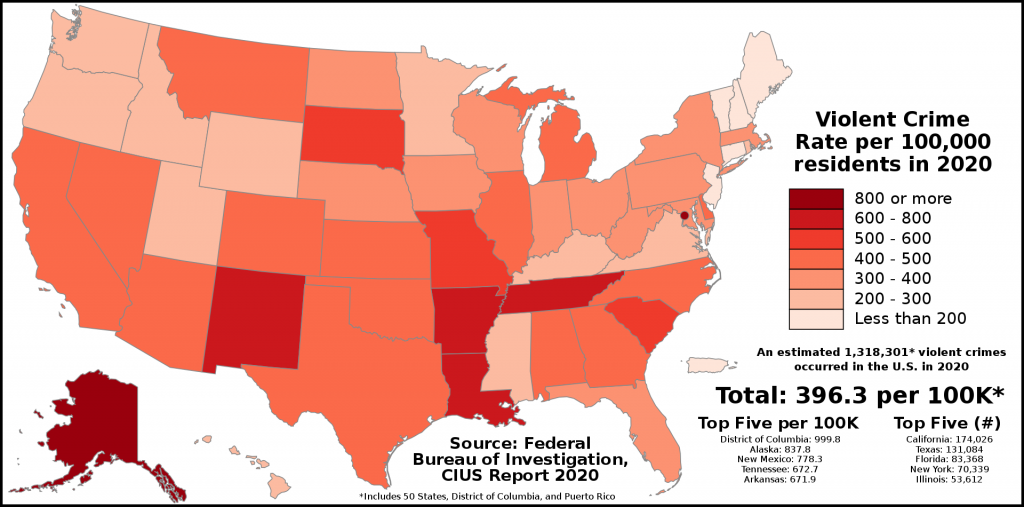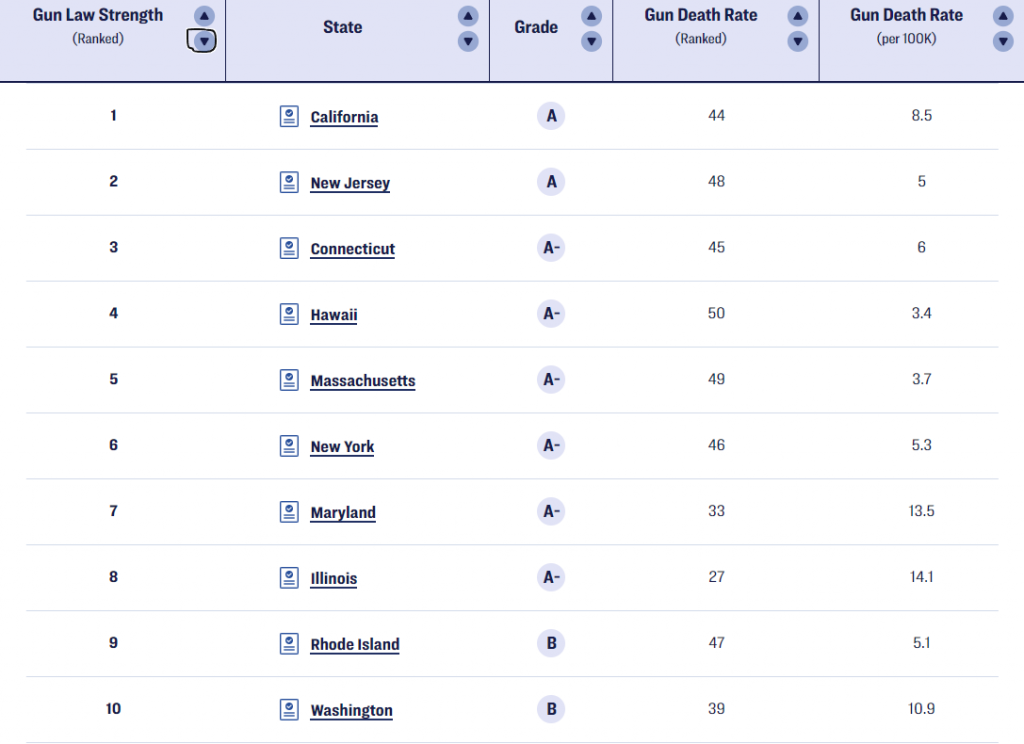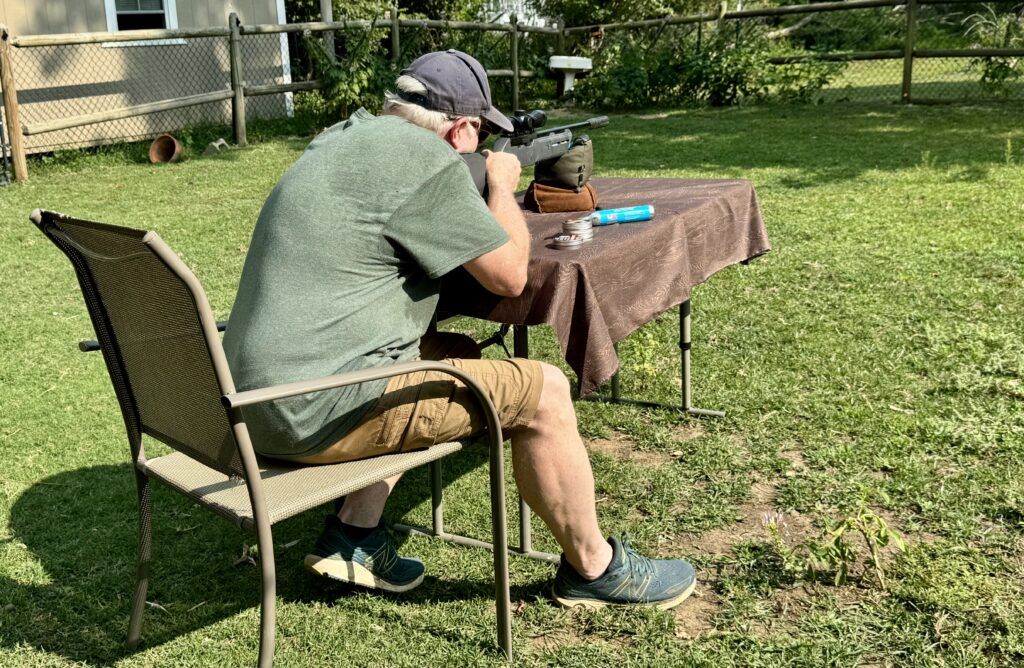One of the issues I think lacking most in modern education is an emphasis on critical thinking and proper debate. Sure, there exist in the world plenty of opinions that it’s easier, more polite, and the world turns on pleasantly, if you do not engage in a heated debate upon the issue.
Pineapple’s proximity to pizza.
Bean’s proper relationship with chili.
Advertisement — Continue Reading Below
Is that one dress blue or gold?
Which season of GoT ruined it irreparably?
But when the LA Times, in the spirit of promoting journalism I assume, publishes a high schooler’s opinion on gun politics, a subject they can have less than a year’s worth of legal interaction with beyond the most basic supervised sort at the most. It’s… well it comes across as exploitive on their part.
Advertisement — Continue Reading Below
Opinion: How effective is gun control?
The United States has become polarized on issues surrounding gun control and the 2nd Amendment. However, research and statistics provide enlightening conclusions about the effectiveness of gun control.
Now, unlike my usual fiskings I am going to attempt to grade this piece rather than merely counter it and I’m certainly not going to hold this young writer to the standards of say, a law professor. I will attempt to point out the problems and the laudable points as they arise, paragraph by paragraph.
The subheading is neutral. A neutral stance in the subheading is a nice way to set up a neutral analysis. It must be followed by a neutral analysis, however, or it comes across as falsely objective.
My theory at this point is going to be that the piece will suffer from regurgitation of manipulated statistics and supposition. Let us continue.
Advertisement — Continue Reading Below
Why should Americans have access to firearms? According to proponents of gun rights, having ready access to firearms is important for personal self-defense, and though this sentiment may seem true on paper, such an open firearm policy would also have consequential downsides to it. The Trace mentions that defensive gun uses occur in only around 70,000 cases annually, while cases of firearm victimization occur at over seven times the rate of defensive gun uses. Reducing the amount of firearms in circulation would limit the ability to purchase firearms for self-defense, but it would also reduce the amount of gun violence caused by such ease of access to firearms. Thus, the benefits of gun control laws would far outweigh the negative consequences.
Heavy on assumptive supposition and objectively dubious premises. Let’s break the paragraph down.
Why should Americans have access to firearms?]
Advertisement — Continue Reading Below
‘Should’ is incorrect. They do have access to firearms. Should implies the default state of not having access, and not only is that incorrect for the United States it is incorrect across most of the world, to include gun control heavy countries. There is, as a natural state, some domestic access to weaponry.
‘Why do Americans have access to firearms?’ or ‘Should Americans continue to have their current access to firearms?’ places the opening inquiry within realistic context.
[According to proponents of gun rights, having ready access to firearms is important for personal self-defense, and though this sentiment may seem true on paper,]
Advertisement — Continue Reading Below
‘May seem true on paper’ when that “paper” happens to be the US Constitution, supported by substantive case law, and with a myriad of real world examples, of which I will cite Greenwood Mall as one recently, is an interesting perspective to take. This perspective must be defended properly. It is akin to saying, ‘While voting may seem a good sentiment paper…” and with a dramatically steep requirement to defend your argument.
[such an open firearm policy would also have consequential downsides to it.]
‘Would’ again is improper, the status of the United States is current, not theoretical. In order to explore this position further and in proper context, the correct term is ‘does’ have consequential downsides to it. We have, compared to everywhere else in the world an open firearm policy and supply.
Advertisement — Continue Reading Below
Let’s put it in the context of voting again, “Such an accommodating voting policy would also have consequential downsides to it.” We could be arguing in favor of tax payer voting vs tax consumer, or property owner voting vs full citizenry. There are numerous theories on properly balanced voting just as their are numerous theories on proper firearm ownership and regulation.
Defend your position.
[The Trace mentions that defensive gun uses occur in only around 70,000 cases annually,]
Advertisement — Continue Reading Below
The Trace is not an unbiased source on this issue, I do find their data (usually) well sourced however. Their most common problem is usually an omission of data or filter because the personally find the context implied thereafter socially problematic.
Competing sources, including those of the revised Kleck numbers, put the number of DGUs at several hundred thousand to in great excess of one million. If we are going to cite DGUs we must also acknowledge that 70,000 is the lowest estimate and therefore probably in error, as is the highest estimate of 4.7 million by the NSPOF. A conclusion was reached by a 2018 RAND Corporation report, which stated that the Kleck-Gertz estimate of 2.5 million DGUs per year, which until recently was cited by the CDC, and other similar estimates, “are not plausible given other information that is more trustworthy, such as the total number of U.S. residents who are injured or killed by guns each year.” The same report also stated that “At the other extreme, the NCVS estimate of 116,000 DGU incidents per year almost certainly underestimates the true number,” concluding that “… there is still considerable uncertainty about the prevalence of DGU”
So there is serious concern with the Trace’s 70,000 estimate, as RAND concludes that the number is very likely over 116,000. When the likely minimum estimate for DGUs is actually 65% higher than the number being quoted from Trace, defense of the argument suffers.
Advertisement — Continue Reading Below
[while cases of firearm victimization occur at over seven times the rate of defensive gun uses.]
Only if you use the Trace’s data, which is not supported by several other studies on the issue and is well below RANDs 116,000, which is also too low. Due to the problems with DGU data it would be most effective to credibility of the argument to run the victimization comparison from multiple estimates and place them in context to the estimate.
Cases of firearms victimization appears uncited and its parameters are therefore unknown. The audience is left to assume this means homicides, 10,000-15,000 annual occurrences, and aggravated assault/attempted aggravated assault, 800,000-900,000 annual occurrences. The math works out to around 500,000 instances of ‘firearms victimization’, making firearms used in just over half the annual total instances. This tracks with homicide and method of injury trends, but the comparison remains less than certain.
If we split the 2.5 Million of Kleck and Gertz against the 116,000 of NCVS study, which RAND has said are likely too high and too low respectively, we’d get about the same number of DGUs as their are aggravated assaults in total. If we then adjust lower, since other estimates from other studies indicate numbers like 250,000 or 370,000, we still end up with around a 1:1 defensive use compared to criminal offensive use ratio, not 7 crimes per DGU.
A legal DGU is the direct prevention of a reasonably assumed attempt at homicide or sexual assault. It is used against what would be classified as an aggravated assault, but the aggravated assault category likely also covers instances in which a DGU would not have been justified. In general though, the crime of aggravated assault meets the legal requirement for a justified DGU response.
[Reducing the amount of firearms in circulation would limit the ability to purchase firearms for self-defense,]
Correct. But overly generalized and not constructive to the defense of your position, especially considering your Crime:DGU ratio cited is almost certainly false in favor of your argument.
Reducing by what method?
Prevention of future sale?
Confiscation or ‘buy back’ scheme?
[but it would also reduce the amount of gun violence caused by such ease of access to firearms.]
Supposition. This assumption only works if there is a meaningful way to reduce the firearm supply specifically to the criminal element by reduction in the legal supply, there is not.
This is spurious reasoning, once you put into context that you do not make 370,000,000+ firearms vanish, even if you halt all legal and illegal firearm sales right this instance, the premise of ‘reducing firearms in circulation’ becomes increasingly absurd.
Now recall that just over half of the aggravated assaults are committed with a firearm, by our quick math ~500,000. What evidence is there to suggest the assault would not have occurred if a firearm had not been present, knowing just under half of them are committed without a firearm? Reducing legal supply does not equate to a 1:1 reduction in illegal actions. What percentage of assaults are estimated to still occur if the firearm is removed from the situation but other methods and motive still exist?
Are we trying to prevent the crime? Or are we trying to prevent the crime happening with a gun involved? The former is a marked improvement on the safe continuity and civility of society, the latter is not but can be claimed as such “on paper” when using filters like ‘gun crime’.
The theory that we can stop a series of motivated illegal acts, that we know are accomplished through far more than one method of potential injury, by the ill defined ‘reduction of the supply’ by some small percentage of a common legal good (we won’t even touch on constitutionally protected yet, just the common ownership), that is again only one method of injury for these actions, without having an estimate of the likelihood the motivated illegal act will still occur or how much of the supply can be reasonably removed, is all just an exercise in wishful thinking.
[Thus, the benefits of gun control laws would far outweigh the negative consequences.
Supposition unsubstantiated by worldwide evidence. Defense of the premise has, so far, been conjecture and wishful thinking supported by bad math. Gun control laws is too vague, which gun control laws? Be specific with the law, benefits, and negative consequences.
Gun rights advocates may point to Chicago gun laws as evidence of strict gun control being ineffective. While it is true that Chicago is home to some of the nation’s highest rates of gun violence, the cause behind it isn’t due to the ineffectiveness of the state’s gun laws. NowThis News explains that the reason behind the city’s high rates of gun violence is largely due to the simplicity of smuggling firearms from states with looser gun control laws. In fact, Indiana, a state bordering Illinois, has some of the loosest gun laws in the nation, making it incredibly easy to purchase a firearm (even as a minor) and transport it across state lines into Illinois, leading to the high rates of gun violence in the state. Although it may be easy to point at Illinois as an example of the ineffectiveness of gun control, closer examination proves the opposite actually: looser gun laws contribute to higher rates of gun violence.
Let’s go again.
Gun rights advocates may point to Chicago gun laws as evidence of strict gun control being ineffective.]
Incorrect. They do so, regularly, and with strong evidence. Click that link.
[While it is true that Chicago is home to some of the nation’s highest rates of gun violence, the cause behind it isn’t due to the ineffectiveness of the state’s gun laws.]
Correct. Guns do not cause crime, they are a convenient method of injury.
[NowThis News explains that the reason behind the city’s high rates of gun violence is largely due to the simplicity of smuggling firearms from states with looser gun control laws. In fact, Indiana, a state bordering Illinois, has some of the loosest gun laws in the nation,]
Illinois ranks 19th in the US for violent crime. Indiana ranks 28th. Wisconsin, 32nd. Iowa, 35th. Kentucky, 45th. Of all the states that touch Illinois, and all of them have looser gun laws, only Missouri ranks higher at 8th. Missouri is 348 miles from Chicago. Do these states export criminal demand for firearms? Where comes this demand? Why would strengthening restrictions in these lower crime states influence Chicago’s crime?
[making it incredibly easy to purchase a firearm (even as a minor)]
Supposition. Hyperbole. What is ‘incredibly easy to purchase (even as a minor)’ when purchasing as a minor is illegal federally? What is the scale of difficult between a purchase in Illinois compared to Indiana or Wisconsin? Are we supposing the illegal action of purchasing a firearm as a minor is more difficult in Illinois, despite being equivalently illegal, than it is in Indiana? To what degree? How many firearms are purchased by minors in Indiana or Wisconsin vs in Illinois, all illegally?
[and transport it across state lines into Illinois, leading to the high rates of gun violence in the state. Although it may be easy to point at Illinois as an example of the ineffectiveness of gun control, closer examination proves the opposite actually: looser gun laws contribute to higher rates of gun violence.


If the assumption that loose gun laws increase violent crime were the case, the top map and the bottom map would look roughly the same. They do not. In many cases they are inverse.
Furthermore, Washington DC had among the most onerous firearms laws in the nation, to include a total ban on handguns starting in 1976. Between 2008 (Heller) and 2017 (Grace) the DC firearm laws were shredded in court, specifically the handgun ban was eliminated and shall issue concealed carry began. This was followed by, and maintained, a 17% reduction in violent crime. The rate dropped by 200 incidents per 100,000 almost immediately, despite DC residents now having and being able to carry firearms and the assertion that the rate should increase, not decrease.
So, do loose gun laws equal violent crime? Are we just looking at Mississippi and not, Maine, New Hampshire, or Vermont?
Let’s look at one more comparative example. Texas and California have dramatically different gun laws and are so large they could qualify as small nations. They also both have concerns with crime bleeding over from Mexico, much like Chicago allegedly has from Indiana.
And yet…

California was more violent than Texas 7 of the 10 years, 2011-2020. We should be observing dramatically more issues in Texas than California if loose gun laws beget violence. There is no conceivable way populations of that size could hide the differences. Or is it that California getting all its crime exported from Arizona and Nevada, who both actually do have higher violent crime rates (Arizona quite a bit higher), unlike Illinois to Indiana, but whose violent crimes combined don’t quite equate to 29% of the incidents in California?
Are we supposing that for every gun incident in Nevada and Arizona combined that they’re illegally giving 3 to California?
The comparison gets even worse when you realize that the homicide rates in Nevada and Arizona are only 7.3 and 7.5 compared to California’s 6.0, meaning the suicide rates in those states (which both make it into the top 10 causes of death) are responsible for more than half of both states’ ‘firearm death rates’.
NowThis News goes further to elaborate that 60% of guns found in Chicago crime scenes come from out-of-state, illustrating how Chicago’s gun violence may have more to do with its neighbors than its own gun control laws. Furthermore, Indiana is ranked 28th in terms of strictness of gun laws, which corresponds to its high firearm death rate in the state, higher than Illinois. Although firearm advocates often use Chicago as proof of the ineffectiveness of gun laws, this example actually backfires on them. Rather than prove that stricter gun laws don’t work, they actually prove that looser gun laws correlate with a higher firearm death rate. Chicago’s strict gun laws aren’t the problem; it’s Indiana’s loose gun laws that are, and coupled with the ease of transporting firearms across state lines, Chicago’s gun violence is evidently a problem influenced by external forces, not internal.
Once again, piece by piece.
NowThis News goes further to elaborate that 60% of guns found in Chicago crime scenes come from out-of-state, illustrating how Chicago’s gun violence may have more to do with its neighbors than its own gun control laws.]
May have, or does? A firearm from out-of-state has entirely legal means of entering the state by entirely legal possessors of that firearm, this seems to indicate that the gun control laws of Chicago and Illinois are, in fact, ineffectual and that it may just be less hassle to shop in Indiana or Wisconsin as those states are more firearm friendly. A FOID card holder is still a FOID card holder, whether in or outside Illinois.
[Furthermore, Indiana is ranked 28th in terms of strictness of gun laws,]
And Illinois is ranked 8th.

Yet there are 6 F rated states with lower death rates than Illinois, New Hampshire’s is significantly lower and its gun safety rating is right next to Indiana’s (26th and 27th respectively according to Giffords). How is it that external state gun policies are undermining the internal state law’s efficacy, but not their native efficacy and crime rates?
[which corresponds to its high firearm death rate in the state, higher than Illinois.]
But lower than other comparable states.
[Although firearm advocates often use Chicago as proof of the ineffectiveness of gun laws, this example actually backfires on them.]
Only if we are using cherry picked evidence, partial evidence, or noncontextually sorted evidence like ‘firearm death rate’ instead of homicide rate.
[Rather than prove that stricter gun laws don’t work, they actually prove that looser gun laws correlate with a higher firearm death rate. Chicago’s strict gun laws aren’t the problem; it’s Indiana’s loose gun laws that are, and coupled with the ease of transporting firearms across state lines, Chicago’s gun violence is evidently a problem influenced by external forces, not internal.
“Firearm death rate” is problematic. So far we have been addressing gun crime specifically, however ‘death rate’ includes suicides and accidents. Firearm suicides outpace firearm homicides. Firearm suicides are especially prevalent among an older white population. Indiana is roughly 80% white. The Giffords maps and charts being cited here do not filter for individual state suicide rates (but the CDC does) only suicide by racial population. This is deliberate. Showing individual state data would change how things look dramatically. Giffords maps only cite sorted state data when it is substantively in support of their message and will obscure the data behind a more agreeable filter otherwise. Hence, “Firearm Death Rate” instead of filtered suicide and homicide rates by state.
For a direct comparison, the Indiana homicide rate (9.7) is lower than the Illinois homicide rate (11.2) and the Indiana violent crime rate (357.7) is lower than the Illinois violent crime rate (425.9) so the higher Indiana ‘firearm death rate’ of 17.3 compared to the Illinois ‘firearm death rate’ of 14.1 can only come from one source.
Suicide.
Are we to believe that Indiana’s lower crime rates, but higher ‘firearm death rate’, is anything other than suicide? Suicide is an event which does not influence the flow of firearms to Illinois in the least, but it is being scapegoated (by omission of outright saying it) as a reason Indiana is problematic to Illinois?
But what about the 2nd Amendment? Don’t all Americans have a right to own firearms? Sure, under the 2nd Amendment of the Constitution, American citizens have the right to own firearms, but that doesn’t mean that everyone has free and unopposed access to owning a gun. In fact, the Supreme Court even ruled that the 2nd Amendment is not unlimited, and that gun control laws are not exactly unconstitutional with the exception of laws that outright ban the ownership of firearms such as the handgun ban.
Okay, let’s explore this.
But what about the 2nd Amendment? Don’t all Americans have a right to own firearms? Sure, under the 2nd Amendment of the Constitution, American citizens have the right to own firearms,]
So do many non-citizens. And not just own, do not make that mistake. Under the US Constitution and as affirmed by Heller, McDonald, and Bruen, US citizens and applicable legal residents have the right to own, to carry, and to clear, reasonable, and objective criteria to licensure of carry, free from any requirement to show ‘special need’ for it.
[but that doesn’t mean that everyone has free and unopposed access to owning a gun.]
That has never been the topic of this discussion, or indeed a subject of the debate at all, although the phrases ‘keep and bear’ and ‘shall not be infringed’ should now come into focus as very poignant to the discussion.
[In fact, the Supreme Court even ruled that the 2nd Amendment is not unlimited, and that gun control laws are not exactly unconstitutional with the exception of laws that outright ban the ownership of firearms such as the handgun ban.
I would suggest you strongly take a look at the Bruen decision and the directions given by the Supreme Court to the lower courts on their cases. Most of the popular gun control laws that fall under the ‘not exactly unconstitutional’ banner are about to be found exactly unconstitutional. Magazine bans, bans that rely on dubious features to determine an ‘assault weapon’, overreaching bans on carry in public spaces, prohibitions on requiring a ‘special need’ to carry a firearm and so forth are far more than an ‘outright ban of ownership’ and most of these law types are just waiting for the process to finish before being declared unconstitutional in specificity. Anti-gun states are, for the most part, just riding the cases out as a form of protest to the necessary limitation on their authority over firearm ownership vs their clear authority over criminal behaviors regardless of method. They are throwing tantrums.
Another thing to consider is the society in which the 2nd Amendment was drafted. Following the American Revolution, there was widespread hatred and fear of a tyrannical and overbearing government resulting from the many years of unfair treatment by Great Britain. Thus, the founding fathers found it necessary that the people of the US had the power to resist and counteract a tyrannical government should it ever come to power. The idea of the 2nd Amendment made sense at the time, but times have changed over the centuries. The idea of an authoritarian government coming into power is hardly realistic given the numerous checks and balances present within the government, and the purpose of the 2nd Amendment is not very applicable today.
A read of Bruen is very much in need. It specifically requires historical precedent.
The more things change, the more they remain the same. The United States government has its own extensive list of abuses of its power, if you believe for a moment that the 2nd Amendment is ‘not very applicable’ today you are not paying attention to world events. The 2nd Amendment is one of those checks on power you are referencing, it is a very important one.
If an authoritarian in power is so unlikely, what were Trump opponents so afraid of? How about the various COVID decisions of dubious legality and constitutionality? Statements like ‘ the idea of an authoritarian coming to power is hardly realistic’ do not stand up to scrutiny when both political parties, with reason, have pointed out those tendencies in the other, and that the acceptance of authoritarianism (so long as its your brand of it) is on the rise in both parties.
Reevaluate these declarations.
Moreover, the aforementioned gun laws that would drastically reduce firearm deaths aren’t unconstitutional either, since they do not outright prohibit the ownership of firearms, but rather make the process more stringent. So while the Constitution does state that every citizen has the right to bear arms, it doesn’t mean gun control laws are unconstitutional in any way, shape, or form. It is still possible to implement gun control laws while abiding by the Constitution. In fact, just about every gun control policy in the US today is constitutional, the very same laws that have been proven to save lives. Furthermore, the 2nd Amendment isn’t unlimited either; former supreme court justice Antonin Scalia directly stated that it, “like most rights,… is not unlimited,” as recorded by Vox. This sentiment is reflected in the success rates of 2nd Amendment claims in court: a mere 1% according to the same source. Considering that the American justice system doesn’t place excessive importance on the 2nd Amendment, why should the rest of us?
Many more problems arise in this paragraph too. Let’s begin.
Moreover, the aforementioned gun laws that would drastically reduce firearm deaths]
Supposition, no substantive evidence exists, internally or externally to the US, supporting the concept that these laws (unnamed) and not the overall socioeconomic climate have a great influence over homicide or suicide rates. The phrase ‘gun laws that would drastically reduce firearm deaths’ isn’t merely assumptive, its fantastical.
[aren’t unconstitutional either, since they do not outright prohibit the ownership of firearms, but rather make the process more stringent.]
Incorrect. Many laws that ‘make the process more stringent’ have been found unconstitutional. Again, see Bruen. The recent ending of the concept of ‘may issue’. Defacto bans are just as much a ban, even if the language does not outright ‘ban’ an item.
An example, out of Chicago area if I recall correctly, had an ordnance in place that forbade a gun store from being within X number of feet from a K-12 school, the distance was chosen after carefully making certain of what the maximum distance was of any viable commercial property that could house a gun store within city limits was from a school, and then deliberately made greater. They didn’t ban gun stores within city limits by text, just by fact.
[So while the Constitution does state that every citizen has the right to bear arms, it doesn’t mean gun control laws are unconstitutional in any way, shape, or form.]
In contrast, just because a law is called gun control or ‘gun safety’ does not exempt it from constitutional scrutiny. Under this species of rather spurious logic however, an Assault Weapons Ban is by default unconstitutional since it bans firearms, yes?
[It is still possible to implement gun control laws while abiding by the Constitution.]
It is, the gun control laws that are falling to Heller, McDonald, and Bruen are ones that have arbitrary, unfair, and or outright absurd provisions in place for the state to exercise uneven power over the citizens ability to keep a firearm and bear it under the guise of ‘public good’, which is a phrase similar to ‘national security’ that gets brought out when they don’t have evidence enough to back the policy. They are infringements which constitutionally shall not be allowed to remain.
[In fact, just about every gun control policy in the US today is constitutional,]
No, they are not and Bruen will be making that plain.
[the very same laws that have been proven to save lives.]
No, they have not. They have been proven to be quite unfair to lower socioeconomic groups though.
[Furthermore, the 2nd Amendment isn’t unlimited either; former supreme court justice Antonin Scalia directly stated that it, “like most rights,… is not unlimited,”]
‘Not unlimited’ and ‘every gun control idea that isn’t an outright ban is automatically allowed’ is quite the leap in logic. ‘Not without limit’ and ‘any limit is allowable’ are not the same concept.
[as recorded by Vox. This sentiment is reflected in the success rates of 2nd Amendment claims in court: a mere 1% according to the same source. Considering that the American justice system doesn’t place excessive importance on the 2nd Amendment, why should the rest of us?
Yet in the next breath most gun control proponents will argue that 1% that did succeed, like Heller, McDonald, and Bruen, were somehow wrong, against the public good, and will “cost lives” in some nebulous form. So which is it? Are the courts to be respected or are they getting it wrong, we cannot seem to decide.
But that is an excellent question. If the US Justice system cannot be bothered to deal with a fraction of a percent of current firearm violations cases now (failed background checks) then why should we add more laws for the legal system to not care about? How would that generate positive efficacy on reducing suicide or homicide rates? Please explain your answer.
Oh, Vox should not be considered a serious source. You might not consider me a serious source either, but I cite and analyze serious sources and attempt to do so from an honest point of view, concealing nothing behind a favorable filter, so take that for what it is worth.
American society has been polarized by the issue of gun control, and in the wake of the Uvalde shooting, it has become clearer that we need an answer to this issue immediately. It has been proven that gun ownership has a correlation with an increase in firearm injury within the home, and the belief that having a gun makes you safer has long been debunked. The Harvard School of Public Health outright states that there is no correlation between owning a firearm and higher levels of safety, but there is a correlation between firearms and deadlier violence at crime scenes. Real-world examples prove to us that stricter gun control laws are effective at reducing the rate of firearm deaths. It is indeed possible to increase gun control without violating the constitution while saving the lives of innocent people and children.
Let’s unpack this.
American society has been polarized by the issue of gun control,]
Usually along the lines of whether or not the individual believes it is an actual constitutional right or not. It is a wonder that only the 2nd Amendment gets treated with this kind of fractious attention, to whether or not it is a ‘real’ right, and that was also commented on in Bruen.
[and in the wake of the Uvalde shooting, it has become clearer that we need an answer to this issue immediately.]
Conjecture. Every crisis spurs this talking point hot take. We need to solve this proverbially ‘now’. That urgency is then used in place of reasoned debate for or against the problems of a given policy.
[It has been proven that gun ownership has a correlation with an increase in firearm injury within the home,]
Check again, that study had many problems and didn’t pass RANDs checks.
[and the belief that having a gun makes you safer has long been debunked.]
That study was also found wanting by RAND. Data has instead found that gun ownership’s motivations are highly societal/social. Westernized ideals do see firearms defensively, but many also have an acceptance of suicide. Not all western residents and citizens ascribe to the so labeled ‘Western’ ideals and do so to varying degrees. Guns making you ‘safer’ is too nebulous a term when accident, homicide, and suicide are all vastly different ways to die and different elements within society value the firearm in highly variant ways.
Guns do not make you safer from attack any more than an airbag makes you a safer driver or less likely to be hit by another driver, that is not how they are utilized as a tool of safety. They are, like a fire extinguisher or a first aid kit, a responsive device in the defensive context. In that context, their lack of use is as much a testament to their efficacy as their successful use is.
Not needing a fire extinguisher because you do not have a fire to extinguish doesn’t devalue the fire extinguisher, and incidents where a fire extinguisher was misused, failed to stop a fire, was improperly used and resulted in injury or death do not either.
[The Harvard School of Public Health outright states that there is no correlation between owning a firearm and higher levels of safety, but there is a correlation between firearms and deadlier violence at crime scenes. Real-world examples prove to us that stricter gun control laws are effective at reducing the rate of firearm deaths.]
Real world examples also prove to us that responsibly armed people save themselves and others.
[It is indeed possible to increase gun control without violating the constitution while saving the lives of innocent people and children.
Substantiate this claim. Specify. Which gun control policies have strong life saving correlative evidence and do not violate the constitutional protections the US citizenry has.
I’ll give you the list.
- Safe Storage
List ends.
All in all, it is in the best interests of the American public that lawmakers do more to expand gun control laws. It’s far too late to save the victims of gun violence in the past, but with rapid action we can save many more in the future.
To learn more about the hazards posed by firearms, check out my article on firearm ownership.
D+
The prose is engaging and readable and the author does not come across as anything other than earnest.
However, the references to sources of dubious quality, the lack of using multiple sources for each claim when claims are difficult to substantiate, and the variation on the overall topic of conversation all distract and detract from the premise. We went from crime in Chicago is Indiana’s fault, to accidents and suicide are bad, to combining them all, to using specific examples of contrasts between states that don’t hold up when given other comparisons between states, to tyranny doesn’t exist anymore since its the modern day and all, to saying that the only gun control that was unconstitutional was bans when it demonstrably isn’t, to all-in-all gun control is really good for everyone and there are no bad things in it actually as long as we don’t ban things.
If I were to summarize this into a more accurate title than ‘How effective is gun control?’, which is not addressed in any but the most vague and cursory sense throughout and fails to be substantiated, it would become ‘All gun control that isn’t an outright ban is both good and constitutional’, that title is an outright falsehood.
The piece fails to specifically address any single gun control policy or support where that policy, implemented in the real world environment, has objectively solid results. Chicago blaming Indiana is actually an outright admission of failure of their laws since they cannot build a policy to account for the influx of ‘crime’ firearms from a state with both a lower violent crime rate and lower homicide rate than they have.
No specific examples of the efficacy of gun control are given or defended, merely the premise that not all gun control is necessarily unconstitutional and the repeated belief, unsubstantiated and only professed, that gun control saves lives.
Real world examples where gun control policy is in place, and violence and deaths are high, and where gun control policies are not in place, with lower rates of violence and death, repeatedly contradict the combined assumptions that gun control is ‘good’ in an overall or any specific connotation.
For example,
In Brazil, all firearms are required to be registered with the minimum age for gun ownership being 25.[1] It is generally illegal to carry a gun outside a residence, and a special permit granting the right to do so is granted to certain groups, such as law enforcement officers.[2] For citizens to legally own a gun, they must have a gun license, which costs R$88,00[3] and pay a fee every ten years to renew the gun register.[4] The registration can be done online or in person with the Federal Police.[5] Until 2008, unregistered guns could be initially registered at no cost for the gun owner, the subsequent referring fee each decade would then apply.[6]
Compared this with,
Firearms in Canada are federally regulated through the Firearms Act and related provisions of the Criminal Code. Regulation is largely about licensing and registration of firearms, including air guns with a muzzle velocity of more than 500 ft/s or 150 m/s and muzzle energy greater than 4.2 ft⋅lb or 5.7 J.[1]
Handgun registration became law in 1934, and automatic firearms registration was added in 1951. In 1969, laws classified firearms as “non-restricted,” “restricted,” and “prohibited.” Starting in 1979, people who wished to acquire firearms were required to obtain a firearms acquisition certificate (FAC) from their local police agency. From 1995 to 2012, all firearms owners were required to possess a firearms licence—either a possession and acquisition licence (PAL), a possession-only licence (POL), a FAC, or a minor’s licence—and all firearms were required to be registered. In April 2012, the Parliament of Canada enacted the Ending the Long-gun Registry Act to eliminate the requirement to register non-restricted firearms. The requirement for all firearms owners to possess a valid firearms licence remained law.[2]
Two similar firearm legal systems, Canada being the more permissive of ownership.
Brazil, with more gun control, has a homicide rate of 22.5 and a suicide rate of 6.4. Canada, with more permissive gun laws, has a homicide rate of 2.0 and a suicide rate of 10.3. Brazil, with more gun control, has a death rate of 28.9 vs Canada’s rate of 12.3. Brazil, with more gun control, have their deaths 4:1 in favor of homicide vs Canada whose are 5:1 in favor of suicide.
The United States, with substantially more permissive firearm laws and number of firearms than either nation, sits in the middle with a death rate of 21.0, 14.5 from suicide and 6.5 from homicide making the ration a little more than 2:1 in favor of self inflicted deaths.
Substantiate these examples against the assertion ‘gun control laws save live’.
“But Canada is 1st World?”
Ah, and the whole idea comes crumbling down…
Maybe, as evidence suggests, it is the general civility and prevailing attitudes of the society, as a whole and within the different socioeconomic groups, and not the law ‘as may seem true on paper’ that can accurately gauge deaths, by violence or self inflicted, within a nation?
So if it isn’t the law, why are we worried about making more laws, especially with dubious enforcement, instead of cultivating the societal civility with programs that promote the ‘westernized’ outlooks that keep deaths low and focus them upon the socioeconomic niches where those attitudes are lacking most of all? Gun control laws tend to negatively impact those same socioeconomic niches that need the uplift the most, the laws are harming the locales they are supposed to help and being little more than an nuisance everywhere else where they aren’t needed to begin with.















